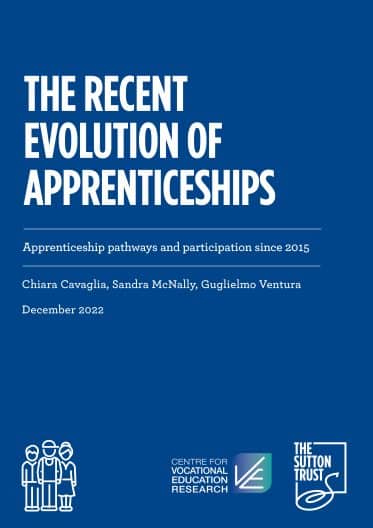Report Overview
In recent years, there has been a large push to increase the supply and quality of apprenticeships. The Apprenticeship Levy – a form of taxation designed to help businesses offer apprenticeships – was introduced in 2017, alongside other policy changes such as the move from Frameworks to Standards and new rules on the quality of training.
But despite efforts to improve the apprenticeship system, numbers have been falling. In light of recent key policy changes, and disruption from the pandemic, how have apprenticeships evolved; who is accessing which apprenticeships; and what might these trends mean for social mobility?
In this report, academics from the London School of Economics and the University of Surrey investigate how apprenticeships evolved between 2015 to 2020, looking at changes in their composition and participation differences across different groups, with a particular focus on those from disadvantaged backgrounds.
